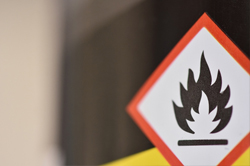If you own or manage a non-domestic property, it is your legal responsibility to protect everyone who works, lives, or visits there from the potential threat of fire. To do this properly, you must carry out, and regularly review, a fire risk assessment.
What is a fire risk assessment?
A fire risk assessment is a protocol that has been developed to aid fire risk reduction and fire prevention. It is stipulated in the Regulatory Reform (Fire Safety) Order of 2005 that every workplace must have a thorough assessment carried out.
Each workplace must nominate a person to be responsible for carrying out the fire risk assessment or employ a certified fire safety expert to do it for them. It is essential that the person performing the assessment is competent and knowledgeable enough to carry out the task, and that they have access to relevant information and support.
When the assessment has been completed, you must then record all the findings and implement any necessary measures following this.
Five steps
According to the gov.uk website and the HSE, there are five main steps involved in performing a fire risk assessment:
1. Identify fire hazards
This step involves identifying anything in your property that could constitute a potential fire hazard.
Fires themselves start when heat is combined with fuel and oxygen. Therefore, you should thoroughly consider how a fire could start in your environment, and what subsequently could burn. For example, electrical equipment such as computers or heaters could be a source of ignition, and any paper surrounding them could intensify a fire.
2. Identify people at risk
In short, every single person within your property at the time of a fire is at risk.
However, sometimes the risk for some is greater than it is for others. So, pay close attention to any children, elderly people or the disabled, as they can be particularly vulnerable. Additionally, if you have any staff who work with hazardous materials or equipment, or perhaps work in an excluded environment, you should keep note of this because they are more at risk.
Others at risk during a fire are visitors who may not know the property well and therefore don’t know the routes to safety.
3. Evaluate, remove, or reduce the risks
Following the initial steps of your risk assessment, you must then evaluate the results. Taking into account both the hazards and risks, you must consider how best to completely remove or significantly reduce the fire risks you have discovered.
This could be by conducting regular fire drills and making sure your staff are aware of the emergency fire action plan. There are also some key pieces of fire safety equipment you can invest in to reduce the risks presented by fire in the workplace.
Remember that this list is extensive but not exhaustive, so be sure to check every avenue in your workplace for hazards.
Fire detectors
Be sure that any fire alarms or other means of warning can be clearly heard and understood. Check that the means of detection are appropriate for the areas they are in, and if these systems run on electricity be sure they have a back-up source.
You should also assess whether the existing means of fire detection will discover a fire quickly enough to raise the alarm and get everyone out safely.
Fire extinguishers
These should be visible or indicated by signs. All staff should be trained on how to use them properly, and not misuse them.
Check that you have as many as you need, and that the right kind is in the right area. Make sure they are also fully accessible in the event of a fire, and that nothing will stop a user from getting to them.
Escape routes
You should assess these, and be aware of the possibility that some routes may be cut off in the event of heat and smoke spreading. Note whether your existing escape routes are adequate for the number of people that will need to use them, and be sure they are kept clear.
Also check that any doors can be opened easily and quickly, and follow appropriate fire door etiquette. Check that escape routes will allow people through them, and also allow them to get out in a reasonable amount of time.
Lighting and signs
Be sure that your lighting is appropriate, and also that it has back-up power. All escape routes should be adequately lit at all times, and any fire safety signs in these areas should be maintained and cleaned.
You should also consider installing new signs to assist the fire and rescue service, such as those to indicate the location of water suppression stop valves, or the storage of hazardous materials.
Include notices above exit doors advising how to operate them, and have signs around your workplace notifying people about the fire action protocols.
Testing and maintenance
One of the best ways to reduce fire risk, after having followed the steps above, is to perform regular testing and maintenance of detectors and lighting. It’s helpful to keep a logbook, both to note the results and also to remind you to check everything.
4. Record, plan and train
If you have five or more employees, your fire risk assessment must be kept as a physical written record. In this record, you should detail all fire hazards and any measures you have taken to reduce them. You must make clear, complete plans of exactly what would happen in the event of a fire, including where any escape routes are. Then, you must train your employees on this, and make sure everyone is informed fully of the processes to follow.
5. Review
Finally, your risk assessment isn’t something you should only perform once. You should regularly and periodically review it, updating any records if necessary. If you identify any significant changes, you should reassess your risk assessment and evacuation plans, and once more retrain and inform staff.





Leave a comment